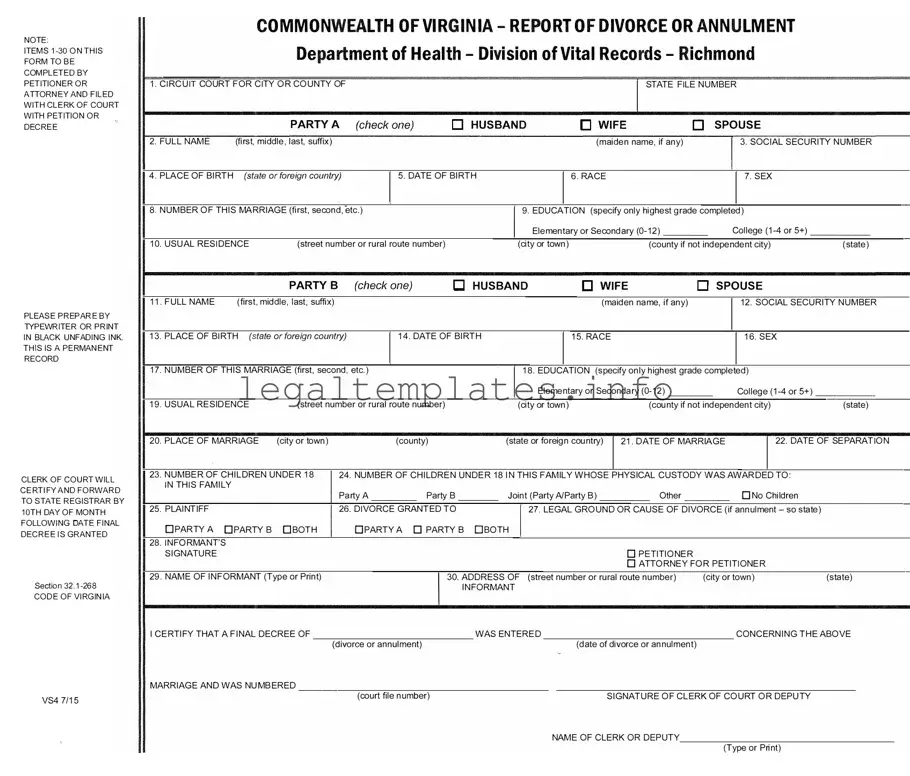What is a VS 4 form?
The VS 4 form is an official document used in the Commonwealth of Virginia to report a divorce or annulment to the Department of Health's Division of Vital Records. It systematically collects comprehensive details about both parties involved in the divorce, the marriage being dissolved, and the resulting decree. This includes personal information, marriage specifics, educational background, and custody arrangements for any children under 18.
Who needs to complete the VS 4 form?
This form must be completed by the petitioner or their attorney. It is essential for ensuring the official record of the divorce or annulment is accurately updated in the state's vital records.
How should the VS 4 form be prepared?
It's important to prepare the VS 4 form either by typewriter or by printing in black unfading ink. This ensures the document remains legible and durable as a permanent record.
When and where should the VS 4 form be filed?
After filling out items 1 to 30, the form should be filed with the Clerk of Court alongside the petition or decree. The Clerk of Court is responsible for certifying the form and forwarding it to the state registrar by the 10th day of the month following the date the final decree is granted.
Is the VS 4 form a public document?
Once filed and processed, the VS 4 form becomes a part of the permanent public record, contributing to the state's vital statistics. However, specific data protection and privacy laws govern who can access detailed information from vital records.
What happens if the VS 4 form is not filed?
Failing to file the VS 4 form can lead to incomplete or inaccurate records of the divorce or annulment in state records. This may cause difficulties for individuals trying to remarry, claim certain benefits, or legally prove their divorce in the future.
What information is needed to complete the VS 4 form?
The form requires detailed information about both parties to the divorce, including full names, social security numbers, places of birth, races, sexes, educational attainments, and customary residences. It also seeks specifics about the marriage, such as the place and date of marriage, date of separation, custody arrangements for children, and grounds for the divorce.
Can amendments be made to a VS 4 form once submitted?
If errors are discovered or changes are required after submission, contacting the Virginia Department of Health's Division of Vital Records is necessary. Amendments might be permitted, but they need to follow specific procedures to ensure the record's accuracy.
What is the role of the informant on a VS 4 form?
The informant, typically the petitioner or their attorney, is responsible for providing the information on the form. This role is crucial for ensuring that the data is accurate and fully reflects the details of the divorce or annulment case.
What is the significance of the certification by the Clerk of Court?
The certification by the Clerk of Court or Deputy is a formal acknowledgment that the information on the VS 4 form has been reviewed and deemed accurate. Furthermore, it verifies that a final decree concerning the marriage has been entered, marking the official conclusion of the case in the eyes of the court.

